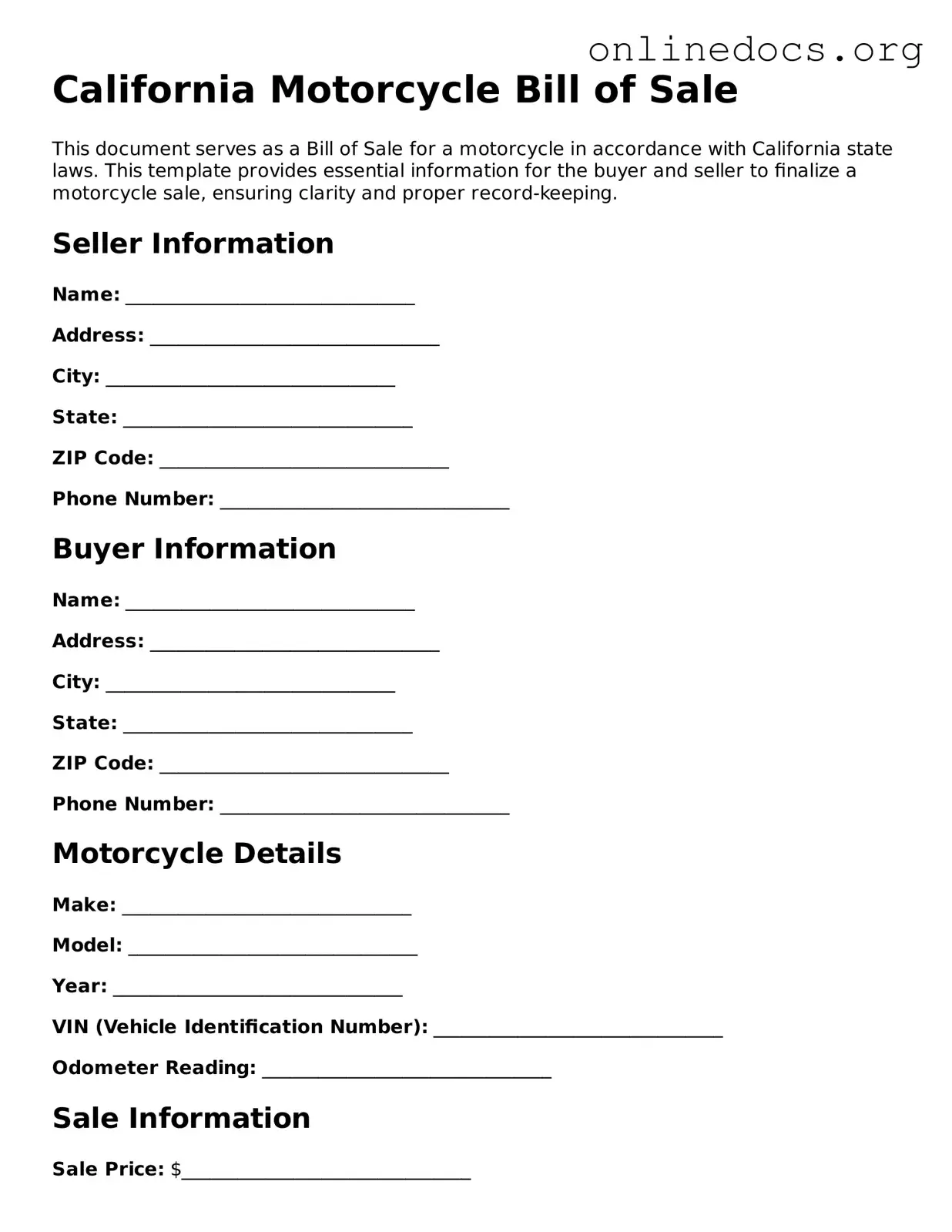The California Vehicle Bill of Sale is quite similar to the Motorcycle Bill of Sale. Both documents serve as proof of transfer of ownership for vehicles. While the Motorcycle Bill of Sale specifically pertains to motorcycles, the Vehicle Bill of Sale can be used for cars, trucks, and other motor vehicles. Each document includes essential information such as the buyer and seller's names, addresses, and the vehicle's identification number (VIN). This ensures that the transaction is recorded and can be referenced in the future.
The Boat Bill of Sale functions similarly to the Motorcycle Bill of Sale but is tailored for watercraft. Like the motorcycle version, it captures the details of the buyer and seller, as well as the specific information about the boat, including its registration number and hull identification number (HIN). Both documents aim to provide a clear record of ownership transfer, which is crucial for legal and registration purposes.
In addition to vehicle-specific sale documents, it is essential to understand the broader implications of legal authorization in transactions, particularly when the parties involved may need to delegate decision-making authority. This becomes particularly relevant when considering the Power of Attorney form, which allows individuals to entrust another person with the authority to act on their behalf in various important matters, ensuring their interests are protected even in their absence.
A Snowmobile Bill of Sale also shares similarities with the Motorcycle Bill of Sale. This document is designed for the sale of snowmobiles and includes pertinent details such as the seller and buyer's information, as well as the snowmobile's VIN. Just as with motorcycles, having a bill of sale is essential for registering the snowmobile and proving ownership, especially in states where snowmobiles require registration.
The ATV (All-Terrain Vehicle) Bill of Sale mirrors the Motorcycle Bill of Sale in its purpose and structure. It documents the sale of ATVs, capturing vital details like the buyer and seller's information and the ATV's VIN. This document is crucial for establishing ownership and ensuring that the buyer can register the ATV with the appropriate authorities, much like the process for motorcycles.
Finally, the Personal Watercraft Bill of Sale is akin to the Motorcycle Bill of Sale, specifically for jet skis and similar watercraft. This document captures the necessary details about the transaction, including the buyer and seller's names and the watercraft's identification number. Like the motorcycle bill of sale, it serves to provide a legal record of ownership transfer, which is vital for registration and potential future sales.
